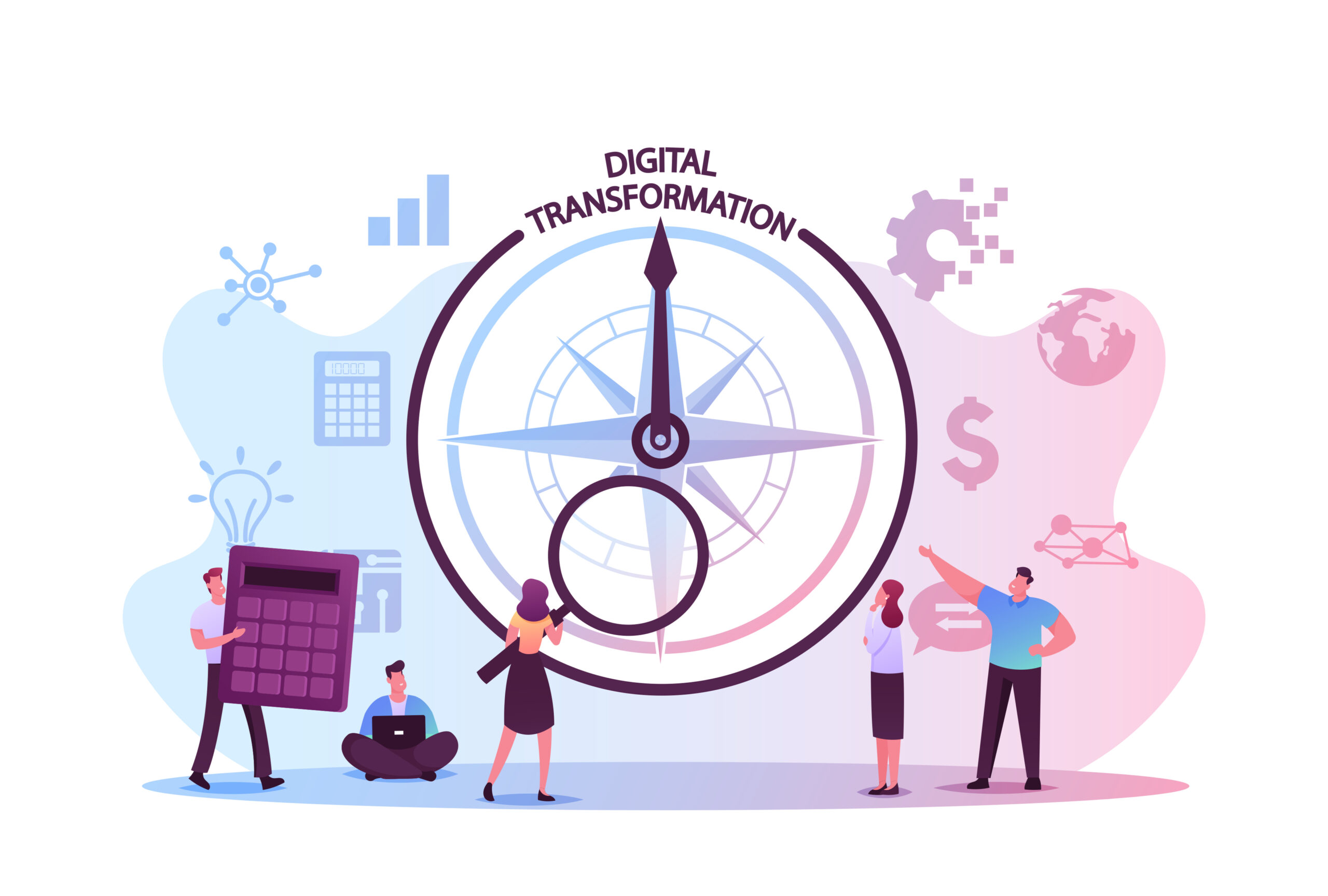Since the advent of computers in the 1950s, digital trends have been taking the world by storm. Moreover, since the introduction of the internet in the 1980s, more than 12 million internet-based companies have emerged and almost all large brick-and-mortar companies have incorporated the internet in several areas of their business. Now, around 30% of the world’s business happens online. And now, even more aggressively than before, we find ourselves at the threshold of the fourth industrial revolution. What does this mean to you? What technological trends shall be taking over? What changes do you need to make and how?
In this article, we’ll explore the different digital trends emerging today and likely to lead the world tomorrow and what you need to do about them.
Digital Trends of the Future

Big Data Analysis
The current internet revolution is making quintillions of data available to organizations– data about their customers, operations, distribution channels, etc. For so long, this data would have remained idle and unused but, with the emerging technologies, organizations now can swiftly dig deep into this data and analyze it. This helps them arrive at deep insights into their customer behaviors and operations utilization.
Artificial Intelligence
Artificial intelligence is an application of computer science by which machines learn to think and make decisions like humans. Artificial intelligence is already being used now to fuel many of the features that we experience today. Some of the widespread applications of AI are the recommendation systems that you experience on social media or streaming platforms. Other applications of AI are computer vision applications such as Google Lens and natural language processing (NLP) applications which enable text-to-speech conversion and vice versa. Artificial Intelligence is infiltrating many aspects of business today and is likely to be a game changer in the future.
Internet of Things (IoT)
The Internet of Things (IoT) is a technology based on artificial intelligence and it enables the creation of a network between devices. This network allows devices to communicate freely to provide better service to customers or higher efficiency in organizations. Imagine your door communicating to your lights to switch off as you close the door on your way out while simultaneously activating your cellphone locator app.
Cloud Computing
Cloud computing is a technology that allows computing services such as servers, storage, databases, networking, software, analytics, and intelligence to be available to you over the internet ‘the cloud’ without the need for you to host servers on your organization’s premises. This allows you to expand your digital services and offerings to customers with high flexibility and speed and at a much more affordable cost.
What do these digital trends mean for you?
These digital trends are already having a great impact on businesses today and will have a higher impact in the future. Let’s see how they impact you.
Marketing
Marketing is one of the biggest areas where digital trends are disruptive. For starters, big data analysis makes it much easier and faster for you to derive insights about your customers. Now, you can not only understand where your customers are and how much they pay, but you can also discover insights into their preferences and their psychological attributes. Perhaps, you discover most of your customers are extroverts. Then, you can use this information to build more effective marketing campaigns. Moreover, with artificial intelligence, you can also target only relevant customers with your ads, build omnichannel marketing campaigns, and track your ads’ effectiveness.
Customer Success
These digital trends now enable you to be in constant touch with your customers in real-time wherever they are. They also enable you to catch up with your customers from where they have left off, regardless of where their last interaction with you has taken place. More importantly, you can deliver more services to your customers in more convenient ways. Customers can make orders via your website, chatbox, or mobile app. They can get better upgrade recommendations and enjoy higher integration between their services and products.
Operations & Distribution
Digitization is pushing forward Industry 4.0 or the Fourth Industrial Revolution. Artificial intelligence enables the building of smart factories that operate smart machines and make automated smart decisions. Data analysis helps you take better decisions to manage your smart factories with higher efficiency and effectiveness across the value chain. Most importantly, these digital trends help you more efficiently build products and services around a mass customization model, thus, delighting more customers.
Finance
It goes without saying that with more customers and higher efficiency, digitization helps you generate higher profits. These digital trends also make it easier for you to provide a much wider array of payment options to your customers. They also make it faster for you to collect your payments and manage your in-cash flow. For instance, technologies such as Blockchain can help you get paid automatically via smart contract applications.
How to make the digital transformation?

According to BCG, around 70% of digital transformation initiatives fail. The reason? Implementation! Digital transformation is one of those things that are easier said than done. Everyone knows it’s coming; everyone knows the change is inevitable, but almost no one can make the change. Here are our recommendations for how you can smoothly steer a digital transformation initiative.
1. Start small
The first thing you want to do is build a success story. Find an area in your organization that will significantly benefit from the transformation, and apply the change there. Make sure as well that this area has the talent necessary to do the job. Once a success story is created, you can now use it to scale digital transformation.
2. Build the business case
For digital transformation to work, you need to be the transformation champion. Take your success story and make a huge internal marketing campaign about it. Make sure everyone knows about it and inspire the change. As you promote your business case around the company, remember that numbers, pictures, and emotional stories combined can make your success story more impactful.
3. Scale to other areas
Start identifying other areas of the organization that can benefit from the transformation, and categorize them based on priority. Follow a step-by-step approach. Start with the areas that will benefit the most then move ahead from there.
4. Enable Resources
Most organizations make the mistake of thinking that they can make the transformation with little to no extra cost. But this is not true! Transformation requires allocating resources such as money, time, and effort. It can’t really succeed for free. So, make sure the resources are available for your great feat.
5. Mobilize Talent
You cannot make any big change without people on board. A digital transformation initiative is a great opportunity to partner with learning and development to help you achieve your organizational objectives. Employees must receive training both on the digital transformation imperative and on the specific skills they will need to make the change happen in their area of work.
6. Build non-digital processes first
One mistake that companies often make with digital transformation is that they assume they can build highly-digitized processes on top of unorganized inefficient non-digital processes, but that makes the transition longer and full of flaws. A better way to go about it is to transform your manual processes to lean, efficient processes, then make the digital move.
These were our recommendations on how to lead digital transformation in your organization and why you need to do it now. If you are ready and would like to deliver training for your employees to prepare them for the shift, please check our digital transformation courses here.

